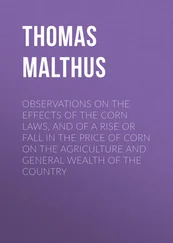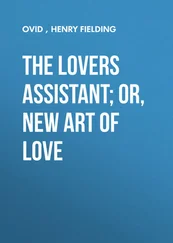1 Cover
2 Dedication Dedication To the Bergström family
3 Title Page The New Laws of Love Online Dating and the Privatization of Intimacy Marie Bergström polity Published in association with INED Éditions
4 Copyright Page Copyright Page First published in French as Les nouvelles lois de l’amour: Sexualité, couple et rencontres au temps du numérique © Éditions La Découverte, 2019 This English edition © Marie Bergström 2022 Revised and adapted for the English language edition. This book has been through the normal scholarly process of anonymous peer review, carried out both by Polity and by the French Institute for Demographic Studies (INED). It is based on a book originally published in French in 2019 by Éditions La Découverte. The text was translated by Bernard Cohen and substantially rewritten by the author for the English language edition. The translation was funded by INED and CNRS, GIS GENRE. Quotations from original untranslated French sources have been translated by the author and by Bernard Cohen for this edition. The right of Marie Bergström to be identified as Author of this Work has been asserted in accordance with the UK Copyright, Designs and Patents Act 1988. First published in 2022 by Polity Press Polity Press 65 Bridge Street Cambridge CB2 1UR, UK Polity Press 101 Station Landing Suite 300 Medford, MA 02155, USA All rights reserved. Except for the quotation of short passages for the purpose of criticism and review, no part of this publication may be reproduced, stored in a retrieval system or transmitted, in any form or by any means, electronic, mechanical, photocopying, recording or otherwise, without the prior permission of the publisher. ISBN-13: 978-1-5095-4351-9 ISBN-13: 978-1-5095-4352-6 (pb) A catalogue record for this book is available from the British Library. Library of Congress Control Number: 2021939855 by Fakenham Prepress Solutions, Fakenham, Norfolk NR21 8NL The publisher has used its best endeavours to ensure that the URLs for external websites referred to in this book are correct and active at the time of going to press. However, the publisher has no responsibility for the websites and can make no guarantee that a site will remain live or that the content is or will remain appropriate. Every effort has been made to trace all copyright holders, but if any have been overlooked the publisher will be pleased to include any necessary credits in any subsequent reprint or edition. For further information on Polity, visit our website: politybooks.com
5 Acknowledgments Acknowledgments A great many people have contributed to this book in different ways. I would first like to thank all the persons interviewed for this research who shared their experiences of online dating but to whom I cannot refer individually. I am truly grateful to Meetic Group for our cooperation, which allowed me to take an original and international approach to user behavior. Special thanks to Héloïse de Monstiers, Stéphane-Laure Bernelin, and Hélène Point for their trust and encouragements. A big thank you to John Thompson at Polity, who made this publication possible and provided me with valuable advice, and to Wanda Romanowski, Eva Lelièvre, and Alain Blum at INED Éditions for their incredible support. Thanks also to Michel Bozon, who has played an important role in this research as my advisor, and to Eva Illouz for encouraging me to publish this book and helping me to do so. I was delighted to work with Bernard Cohen, who translated several chapters of this book, and Rébecca Lévy-Guillain, who conducted interviews for this project. I am indebted to all the people who have commented on various chapters of this book, first of all Étienne Ollion, who helped me improve the text in a decisive way. Thanks also to the anonymous reviewers at Polity and at INED Éditions, as well as to Florence Maillochon, Jan Bergström, and Louise Caron. I received valuable feedback on previous versions of this text by Annabelle Allouch, Milan Bouchet-Valat, Thomas Collas, Joseph Confavreux, Thomas Depecker, Claire-Lise Gaillard, Josué Gimel, Gwenaëlle Mainsant, Elise Marsicano, Camille Masclet, Marie Plessz, Clément Rivière, Mathieu Trachman, and Florian Vörös: I wish to thank all of you. My gratitude goes also to Arnaud Régnier-Loilier and Wilfried Rault, who introduced me to the EPIC survey team. Finally, I would like to thank the institutions who funded this research: the French Institute for Demographic Studies (INED), the GIS Institut du Genre, the Oxford-Sciences Po Programme (OxPo), and the Observatoire sociologique du changement (OSC) at SciencesPo Paris. I feel incredibly fortunate with my loving and supportive family. After years of publishing in French, I am delighted to be able to share my research with those to whom I owe so much. This book is dedicated to Ulla, Hans, Jan, Linda, Ebba and Oskar Bergström.
6 Figures Figures 1.1. Front page of The Matrimonial News and Special Advertiser (February 1877) 1.2. Newspaper publicity for the “computer dating” agency Compatibility ( LIFE , August 1969) 1.3. Interface of the BBS Matchmaker 1.4. Interface of the Minitel messaging system ULLA 1.5. Interface of Match.com (year 2000) 1.6. Interface of Tinder (year 2012) 2.1. Homogeneity in dating app interfaces: from left to right, Tinder, Bumble, Hinge, happn, and Facebook Dating 2.2. Stereotypical branding between love and sex (Match and EasyFlirt) 3.1. Rate of use of online dating platforms in France, the United States, and Germany (%) 3.2. Ranking of meeting venues in the United States in 2019 and in Germany in 2020 (%) 4.1. Time between initial contact and first sexual intercourse among couples in France (%) 6.1. Percentage, by age group, of the women and men in the United States who have used a dating site or app at least once 6.2. Pyramid of ages, by gender, declared on four European dating platforms (%) 7.1. Share of female and male users initiating contact on dating platforms in six countries in 2019 (%)
7 Sources Sources Surveys ATP The American Trends Panel wave 56, Pew Research Center, Washington, DC, 2019 (4,860 respondents). For more information, see Pew Research Center, 2020a, 2020b, 2020c. Baromètre 2016 Baromètre Santé 2016, Santé publique France, 2016 (15,216 respondents). For more information, see Bajos et al., 2018. CSF Contexte de la sexualité en France, INSERM–INED, 2006 (12,364 respondents). For more information, see Bajos and Bozon, 2012. EPIC Étude des parcours individuels et conjugaux, INED–INSEE, 2013–2014 (7,825 respondents). For more information, see Rault and Régnier-Loilier, 2019. Eurostat Eurostat database, 2002–2019, European Union. For more information, see Eurostat, 2020. GSS General Social Survey, NORC–University of Chicago–National Science Foundation, 1972–2018 (64,814 respondents). For more information, see Marsden, 2012. IALP Internet & American Life Project Survey, Pew Research Center, Washington, DC, 2013 (2,252 respondents). For more information, see Smith and Duggan, 2013. Pairfam The German Family Panel release 12.0, German Research Foundation (DFG), 2019–2020 (7,630 respondents). For more information, see Huinink et al., 2011; Brüderl et al., 2021. PTS Pew Tracking Survey, Pew Research Center, Washington, DC, 2015 (2,001 respondents). For more information, see Pew Research Center, 2016.
Surveys Big Data Big Data Meetic Group Platforms, Meetic Group Europe, 2019: Platforms analyzed: Match, Meetic, Ourtime, DatingDirect, Lexa, LoveScout24 and Neu. Metadata on: anonymized user profiles (27,709,707 profiles) and contact behavior (824,989,940 exchanged messages).
Interviews Interviews Interviews with users, 2007–2018: biographical interviews with 82 French users of dating sites and applications, conducted by Marie Bergström and Rébecca Lévy-Guillain. Interviews with entrepreneurs, 2009–2019: semi-structured interviews with 19 French, US, and Canadian founders or employees of dating sites and applications, conducted by Marie Bergström.
Читать дальше












